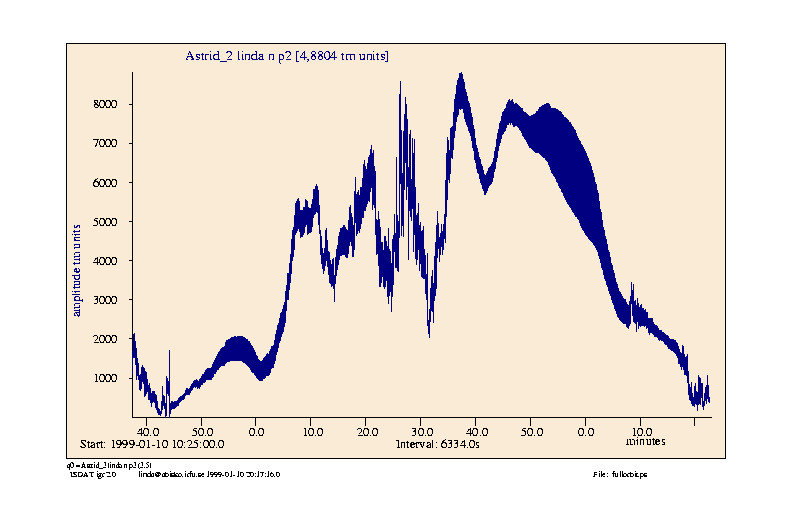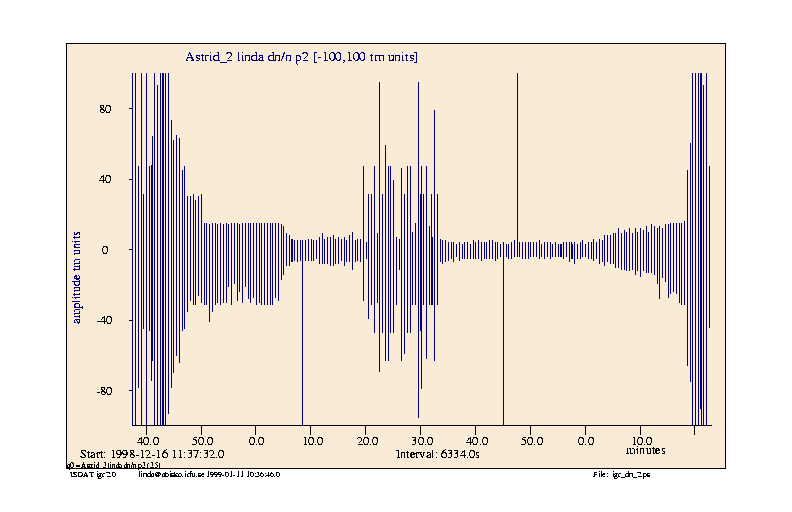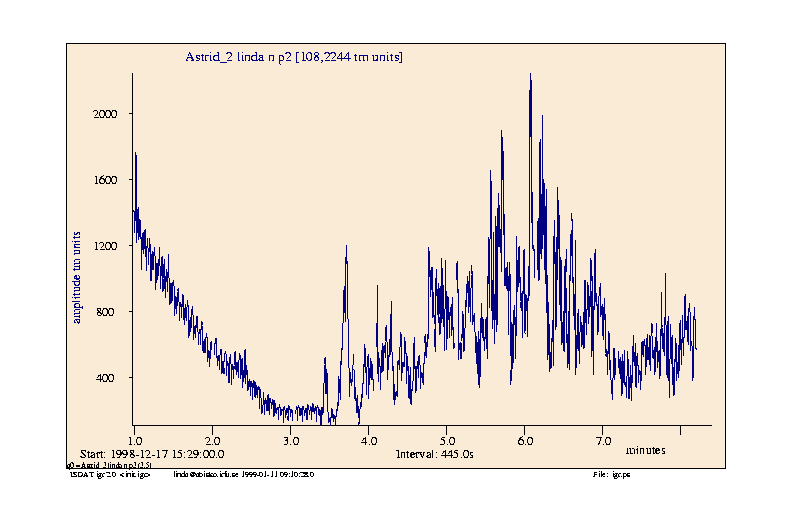![[IRF logo]](../img/ul.gif ) |
![[Space Plasma Physics Program at IRF-U]](../img/ur.gif) |
||||||||||||||||||||||||||||||||||||||||||||||||||||||||||||||||||||||||||||||||||||
LINDA data examplesOn this page, you can view some of the first data gathered by LINDA on Astrid-2!LINDA captures one full orbit - For the first time!This data set, showing plasma density, was captured during Orbit 423 on 10 january 1999 starting at about 10:25:00 UT. For the very first time for was data captured during one full orbit, which is something that has never been done before by an experiment built by the Uppsala division (IRF-U). The data was taken with only one probe, in order to conserve onboard memorym. The plasma density was measured at 16 samples per second, 16 bits resolution. The relative density fluctuations were measured at 8192 samples per second, 12 bits resolution, in 0.186 second long snapshots twice a minute. The most significant feature of this data capture is when ASTRID-2 passes through the austral auroral oval. Rapid density fluctuation [Figure 1] as well as enhanced wave activity [Figure 2] can here be seen.
Figure 1: Density (tm-units) vs. time (min.).
Figure 2: Relative Density (tm-units) vs. time (min.).
LINDA captures Auroral oval during a Day/Night crossing!This data set, showing plasma density, was captured during Orbit 97 on 17 december 1998 starting at about 15:29:00 UT. The measurement was done in real time as the Astrid-2 passed from dayside to nightside and then into the auroral oval. The plot clearly shows how the plasma density drops as the satellite passes from dayside to nightside. When Astrid-2 moves into the auroral oval the density fluctuations increases most significantly.
Figure 1: Density (tm-units) vs. time (s).
|
|||||||||||||||||||||||||||||||||||||||||||||||||||||||||||||||||||||||||||||||||||||
| ASTRID-2 | |||||||||||||||||||||||||||||||||||||||||||||||||||||||||||||||||||||||||||||||||||||
| LINDA | |||||||||||||||||||||||||||||||||||||||||||||||||||||||||||||||||||||||||||||||||||||
| INSTRUMENT | |||||||||||||||||||||||||||||||||||||||||||||||||||||||||||||||||||||||||||||||||||||
| FACT SHEET | |||||||||||||||||||||||||||||||||||||||||||||||||||||||||||||||||||||||||||||||||||||
| DATA | |||||||||||||||||||||||||||||||||||||||||||||||||||||||||||||||||||||||||||||||||||||
 |
|||||||||||||||||||||||||||||||||||||||||||||||||||||||||||||||||||||||||||||||||||||
 |


